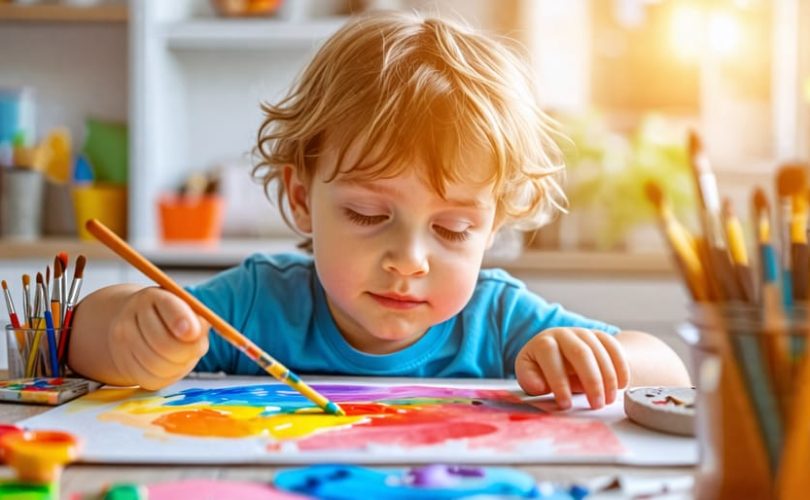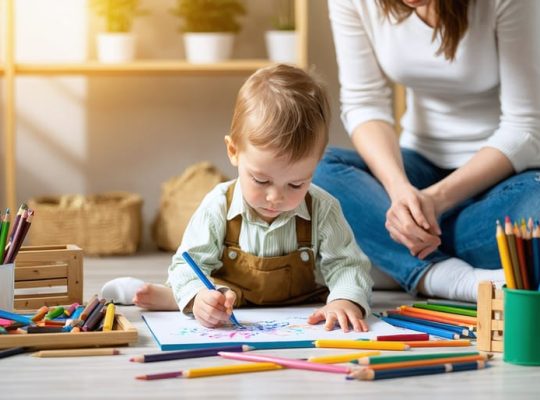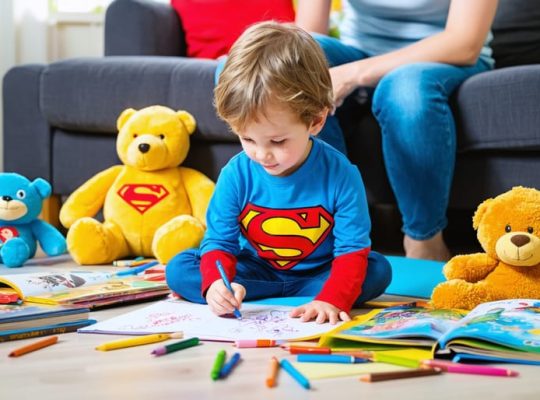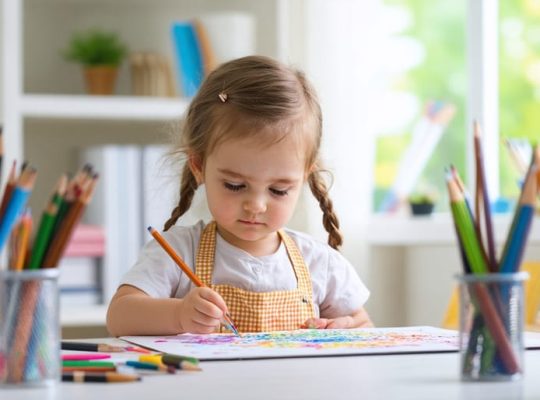Art therapy harnesses the power of creative expression to support mental health and well-being. By engaging in artistic activities under the guidance of a trained art therapist, individuals can explore their emotions, develop coping skills, and foster self-awareness. This therapeutic approach is particularly beneficial for children, as it provides a non-threatening and playful means of communication, allowing them to express their inner world when words may fail. Art therapy offers a safe space for children to process difficult experiences, build resilience, and develop a stronger sense of self, ultimately promoting emotional growth and healing.
What is Art Therapy?
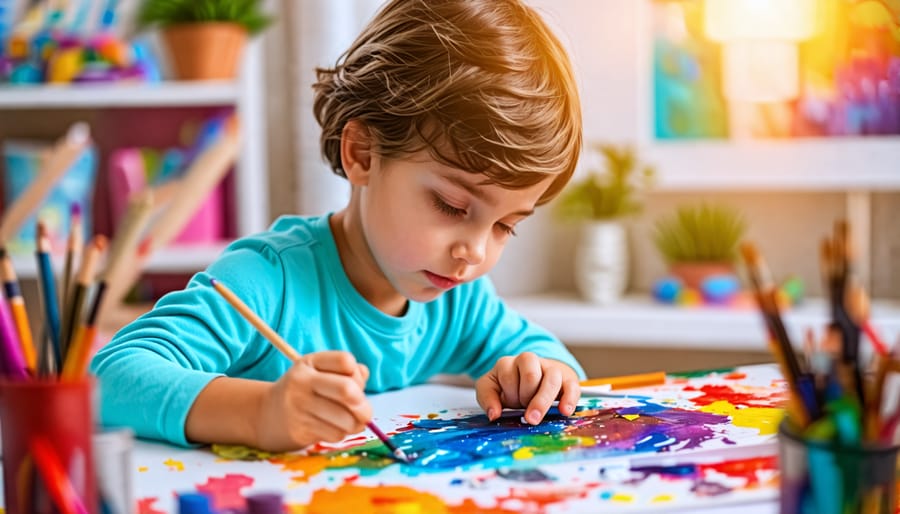
The Role of Creativity
Creativity plays a vital role in art therapy, particularly when it comes to helping children express their emotions and experiences. Through various artistic mediums, such as drawing, painting, sculpting, or collage-making, children can communicate their inner world in a way that feels safe and non-threatening. For many children, especially those who have experienced trauma or have difficulty verbalizing their feelings, art becomes a powerful language that allows them to share their stories and process complex emotions.
By engaging in creative activities, children can explore their thoughts and feelings without the pressure of finding the right words. Art therapists provide a supportive and nurturing environment where children feel validated and understood as they create. The act of making art itself can be therapeutic, as it allows children to focus on the present moment, reducing stress and anxiety.
Moreover, the creative process helps children develop problem-solving skills, self-awareness, and emotional resilience. As they experiment with different materials and techniques, children learn to take risks, embrace mistakes, and find innovative solutions. This process fosters a sense of mastery and self-confidence, which can translate into other areas of their lives.
Art Therapy vs. Art Classes
While both art therapy and art classes involve creative expression, there are key differences between the two. Art therapy is a mental health treatment that uses art-making as a tool for self-expression, exploration, and healing under the guidance of a trained art therapist. The focus is on the therapeutic process and emotional well-being rather than the artistic outcome. In contrast, art classes primarily aim to teach specific artistic skills and techniques, with the main goal being the creation of aesthetically pleasing artwork. Art classes are often taught by artists or art educators and do not typically address mental health concerns. However, engaging in art activities can still provide relaxation, enjoyment, and a sense of accomplishment, which may contribute to overall well-being. Ultimately, art therapy offers a unique, professionally guided approach to support mental health, while art classes focus on developing artistic abilities in a more general educational setting.
Benefits of Art Therapy for Children’s Mental Health
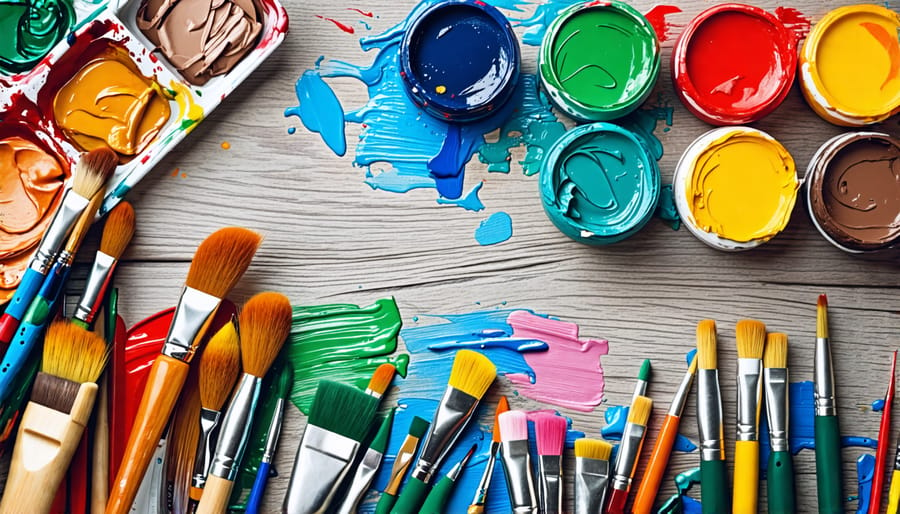
Emotional Regulation
Art therapy provides a safe, non-verbal outlet for children to identify, express, and manage their emotions. Through creative activities like drawing, painting, or sculpting, children can explore their feelings without relying solely on words. An art therapist guides the child in understanding and regulating their emotions, teaching them healthy coping strategies. For example, a child might create a “feelings wheel” with different colors representing various emotions, helping them recognize and communicate their emotional state. Art therapy can also involve role-playing or storytelling through art, allowing children to express and process difficult emotions in a less threatening way. By providing a creative, tangible outlet for emotions, art therapy helps children develop emotional intelligence, self-awareness, and resilience. It can be particularly beneficial for children who have experienced trauma, as it offers a gentle, indirect way to process and heal from painful experiences. Through art therapy, children learn to identify their emotions, express them in a healthy manner, and develop a toolkit of coping strategies to manage stress and challenges. By fostering emotional regulation skills, art therapy supports children’s overall mental health and well-being, setting them up for success in school, relationships, and beyond.
Self-Esteem and Confidence
Art therapy provides a powerful avenue for children to express themselves creatively, fostering a sense of accomplishment and boosting their self-esteem. As they engage in the therapeutic process, children can explore their emotions, thoughts, and experiences through art, free from judgment or expectations. The act of creating something tangible, whether it’s a painting, sculpture, or collage, allows children to take pride in their work and feel a sense of ownership over their creations. Art therapists offer positive feedback and validation, recognizing the unique qualities and strengths in each child’s artistic expression. This supportive environment helps children develop a more positive self-image and greater confidence in their abilities. Moreover, as children learn to communicate their inner world through art, they gain a deeper understanding of themselves, fostering self-awareness and self-acceptance. By celebrating their creative achievements and personal growth, art therapy empowers children to believe in themselves and their potential, laying the foundation for improved self-esteem and confidence that can extend beyond the therapy session and into their daily lives.
Coping with Trauma and Stress
For children who have faced traumatic experiences or are dealing with ongoing stress, art therapy offers a safe, non-verbal way to express their feelings and begin the healing process. Through drawing, painting, sculpting, or other creative activities, kids can communicate their emotions and experiences without relying solely on words. This is especially beneficial for children who may struggle to verbalize their thoughts due to age, language barriers, or the intensity of their trauma.
Art therapy provides a supportive environment where children can explore their feelings at their own pace, with the guidance of a trained therapist. The creative process helps kids process and cope with difficult emotions, develop self-awareness, and build resilience. By externalizing their experiences through art, children can gain a sense of control and distance from their trauma, allowing them to view their situation from a new perspective and develop healthier coping strategies.
Moreover, art therapy can help children build trust and strengthen relationships with their therapist and caregivers. As they share their artwork and the stories behind it, kids feel heard, validated, and supported, which is crucial for their emotional recovery and overall well-being.
Art Therapy in Practice
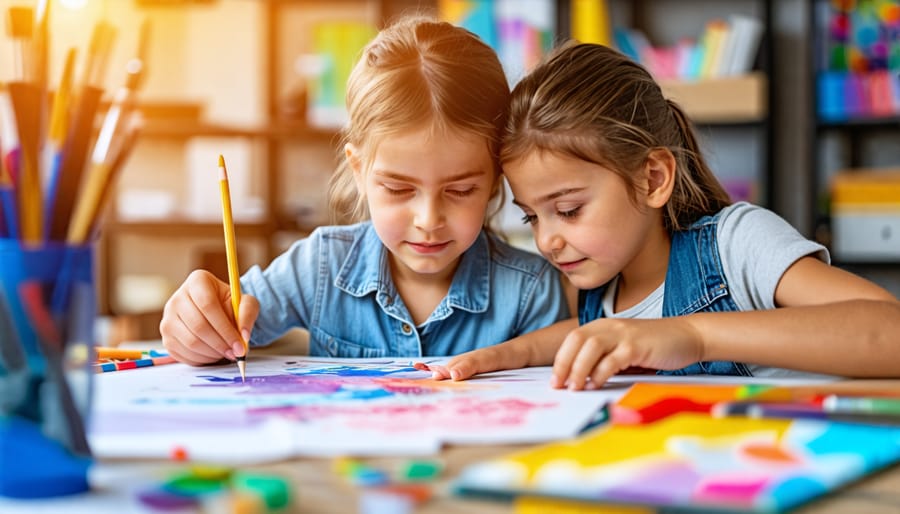
Types of Art Therapy Activities
Art therapy activities are tailored to address specific mental health concerns, helping children express their emotions, process experiences, and develop coping strategies. Drawing and painting exercises encourage self-expression and emotional exploration, allowing children to communicate their feelings in a non-verbal way. Collage-making helps children create visual narratives, fostering self-awareness and identity development. Sculpting with clay or play dough promotes sensory exploration and stress relief, while also providing a tactile outlet for emotions. Guided imagery exercises, where children visualize peaceful scenes or positive outcomes, can reduce anxiety and build resilience. Group murals and collaborative projects foster social connection and teamwork, helping children with social anxiety or interpersonal challenges. Art journaling combines written and visual expression, encouraging self-reflection and emotional processing. Lastly, story-telling through art, such as creating comic strips or illustrated books, helps children make sense of their experiences and develop problem-solving skills. By engaging in these diverse activities, children can express themselves, gain new perspectives, and build emotional resilience in a safe and supportive therapeutic environment.
Finding a Qualified Art Therapist
Finding a qualified art therapist for your child is crucial to ensuring they receive the best possible care. Start by seeking referrals from your child’s pediatrician, school counselor, or mental health professional. Look for therapists who specialize in working with children and have experience treating your child’s specific mental health concerns. It’s essential to choose a licensed art therapist who has completed the necessary education and training. The American Art Therapy Association provides guidance on how to find a credentialed art therapist in your area. When interviewing potential therapists, ask about their experience, treatment approach, and success rates. It’s also important to consider practical factors such as location, availability, and insurance coverage. Above all, trust your instincts and choose a therapist who makes both you and your child feel comfortable, supported, and understood. Remember, finding the right art therapist may take some time, but it’s a vital step in helping your child heal, grow, and thrive.
Conclusion
In conclusion, art therapy is a valuable and effective tool for supporting children’s mental health and well-being. By providing a safe, non-judgmental space for self-expression, emotional exploration, and skill-building, art therapy can help children navigate the challenges of growing up in today’s complex world. From reducing stress and anxiety to improving self-esteem and communication skills, the benefits of art therapy are numerous and far-reaching.
As a parent, teacher, or healthcare professional, it’s essential to recognize the signs that a child may be struggling with their mental health and to seek support when needed. Art therapy can be a powerful complement to traditional talk therapy and medication, offering a unique and engaging way for children to process their experiences and build resilience.
If you believe that your child could benefit from art therapy, don’t hesitate to reach out to a qualified art therapist or mental health professional. With the right support and resources, children can develop the tools they need to thrive emotionally, socially, and academically. Remember, taking care of our children’s mental health is just as important as taking care of their physical health – and art therapy can be a transformative part of that journey.

